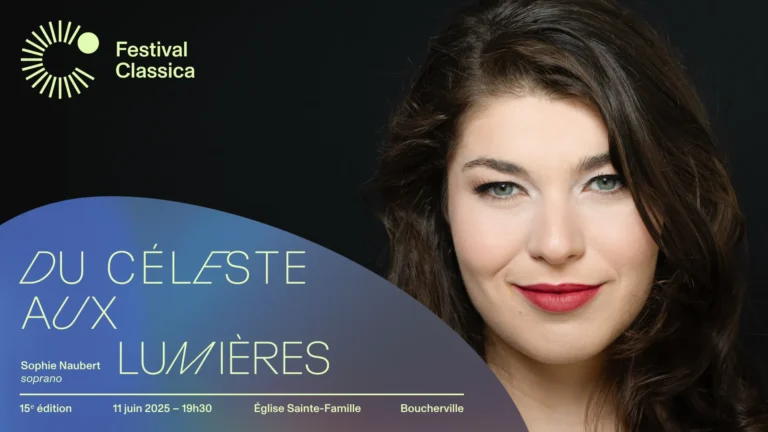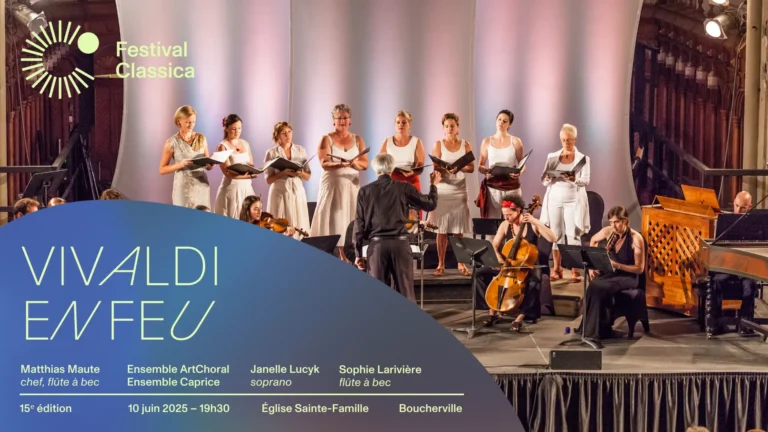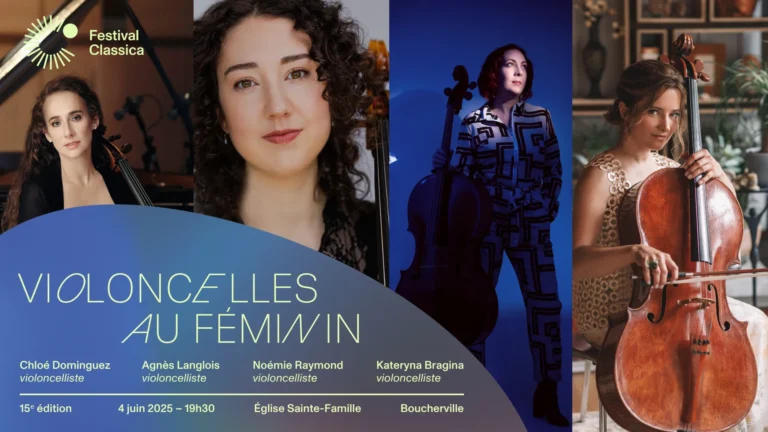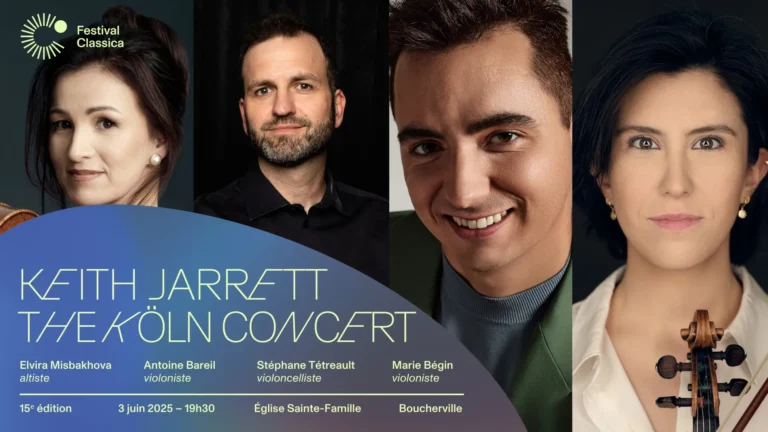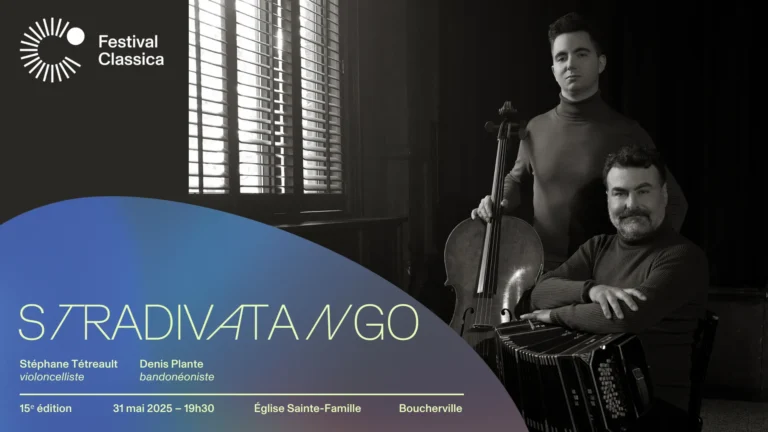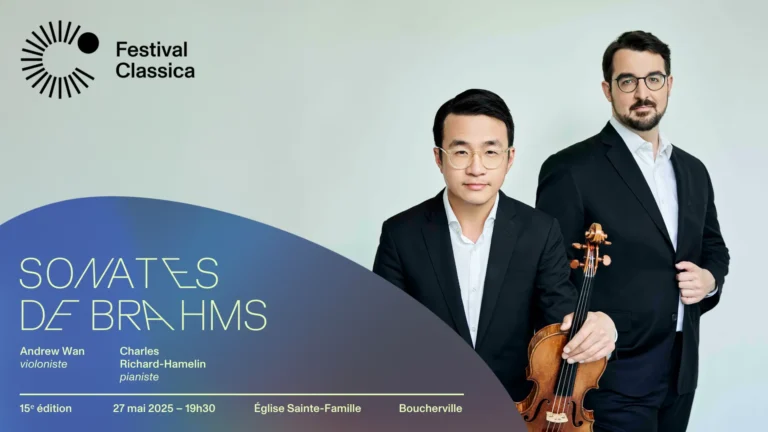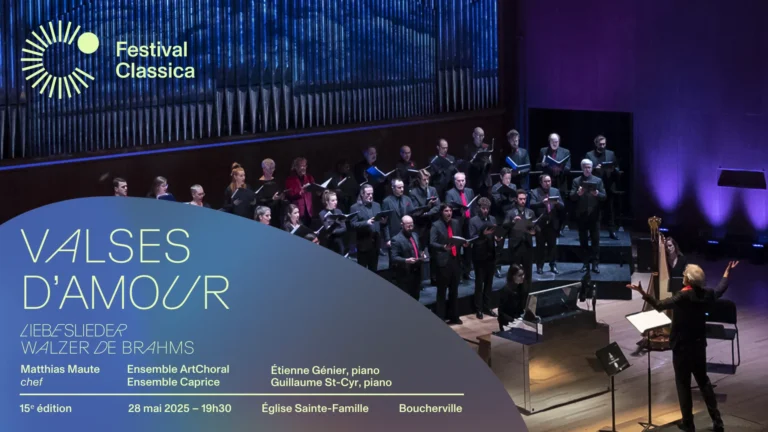Plongez dans l’univers baroque anglais avec un programme envoûtant réunissant Händel et Purcell. De l’intensité dramatique des opéras de Händel (Giulio Cesare, Alcina, Rinaldo, Semele) à la poésie envoûtante des fantaisies et airs de Purcell, ce concert explore les passions et les émotions humaines à travers la virtuosité du soprano, du violon, du violoncelle, de l’alto et du clavecin. Une soirée riche en émotions et en virtuosité musicale.
Immerse yourself in the world of English Baroque with a captivating program of Händel and Purcell. From the dramatic intensity of Händel’s operas (Giulio Cesare, Alcina, Rinaldo,Semele) to the enchanting poetry of Purcell’s Fantasias and Arias, this concert explores human passions and emotions through the virtuosity of soprano, violin, cello, viola, and harpsichord. A night rich in emotion and musical brilliance.
Programme
George Friedrich Händel (1685-1759)
Giulio Cesare
Da tempeste
Se pietà di me non senti
Alcina
Tornami a vagheggiar
Credete al mio dolore
Rinaldo
Lascia ch’io pianga
Henry Purcell
Fantasia no 1 en ré mineur, Z. 732
Fantasia no 2 en fa majeur, Z. 733
Fantasia no 3 en sol mineur, Z. 734
Henry Purcell
Come Ye Sons of Art
Strike the Viol
Oedipus
Music for a While
George Friedrich Händel
Semele
No, No I’ll Take No Less
Henry Purcell
The Fairy Queen
O Let Me Weep
Program
George Friedrich Händel (1685-1759)
Giulio Cesare
Da tempeste
Se pietà di me non senti
Alcina
Tornami a vagheggiar
Credete al mio dolore
Rinaldo
Lascia ch’io pianga
Henry Purcell (1659-1695)
Fantasia no. 1 in D minor, Z. 732
Fantasia no. 2 in F major, Z. 733
Fantasia no. 3 in G minor, Z. 734
Henry Purcell
Come Ye Sons of Art
Strike the Viol
Oedipus
Music for a While
George Friedrich Händel
Semele
No, No, I’ll Take No Less
Henry Purcell
The Fairy Queen
O Let Me Weep
George Friedrich Händel
Semele
Myself I Shall Adore
POUR ACHETER VOTRE BILLET, C’EST ICI!
Ce contenu provient du Festival Classica et est adapté par PAN M 360
